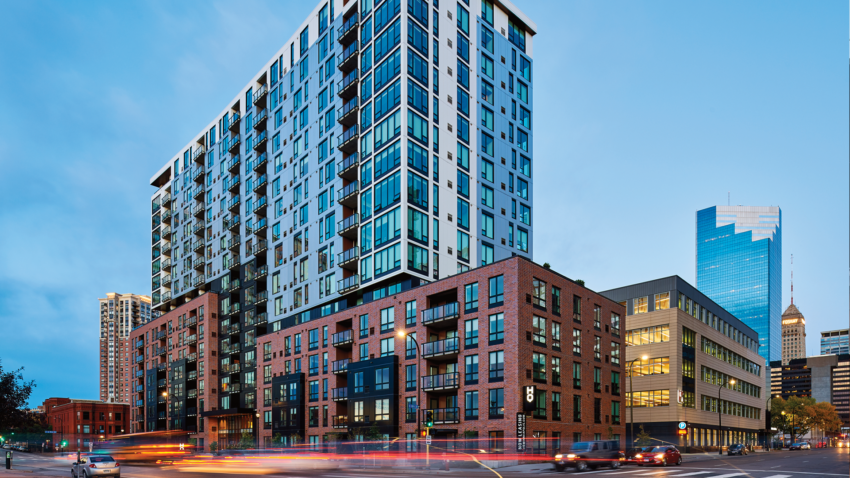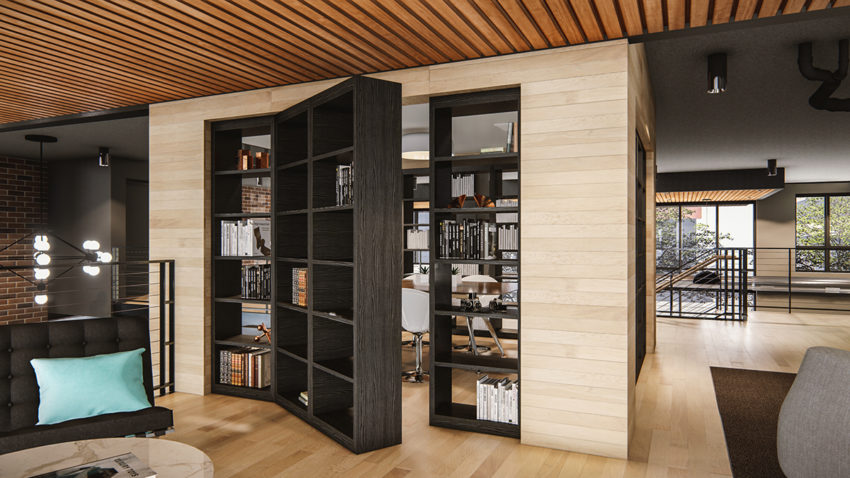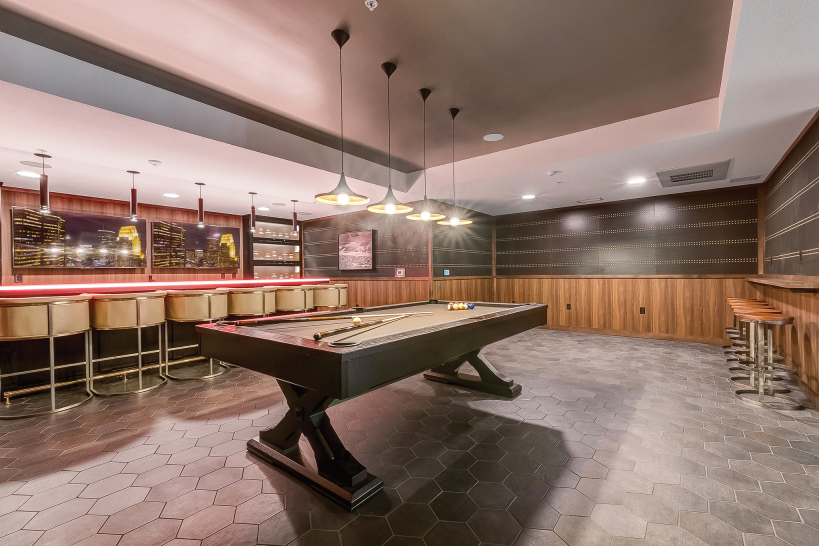Build Me Up: Real Estate and Development Trends
The latest Build Me Up podcast features a discussion with Peter Diessner, Jeff Hildahl and Matt Alexander, three Kraus-Anderson leaders in Real Estate and Development. The three sat down in our podcast studio to share some of the complicated process of development, how rising construction costs, online retail and the affordable housing challenge are shaping the future of development, and the strategy behind creating a sense of community within the built environment.
Meet Peter Diessner, Jeff Hildahl and Matt Alexander

Peter Diessner is President of Kraus-Anderson Realty and Development. Prior to this role, he was Vice President of Kraus-Anderson Financial Services Group, providing financial analysis, underwriting, due diligence, and sourcing and funding of debt and equity for KA’s existing and prospective portfolio of real estate. Pete’s legal and finance backgrounds provide him with a thorough understanding and well-rounded perspective of real estate deals. Prior to joining Kraus-Anderson in 2018, Pete spent about four years building and operating his own successful real estate law practice at a well-established firm in downtown Minneapolis, and before that he practiced real estate law for about six-and-a-half years at one of Minnesota’s largest and most prestigious law firms.

Jeff Hildahl is Senior Vice President of Properties & Leasing at Kraus-Anderson Realty. He is responsible for the execution of Kraus-Anderson’s real estate asset strategy, overseeing all aspects of leasing, property management, acquisitions, and dispositions. This includes driving growth and value to Kraus-Anderson Realty Company’s diverse portfolio of five million square feet across the upper Midwest. Jeff leverages his deep national experience in asset management and leasing to optimize our portfolio’s value and strategy with a full life cycle.

Matt Alexander is the Senior Vice President, Kraus-Anderson Development. Matt oversees Kraus-Anderson Development Company’s development strategy and investment opportunities, and the underwriting and due diligence of all commercial real estate transactions, including large mixed-use developments, office, medical office buildings, hospitality, retail and multi-family housing. His depth of experience includes CityPlace, a 100-acre mixed-use multi-phased development in Woodbury, MN; medical office buildings throughout the Twin Cities metro; and early entries into senior housing development with projects for KA’s own portfolio and for third-party owners. He also led the Development team’s work with the City of Richfield on Chamberlain Apartments.
The High Stakes World of Development
[perfectpullquote align=”right” bordertop=”false” cite=”Matt Alexander” link=”” color=”#CC0202″ class=”” size=”22″]”It’s kind of like being a professional gambler. You really have to hedge your bets at every corner.”[/perfectpullquote] The development process can be time consuming and complex. It requires constant communication, collaboration, and calculated risk taking. Diessner and Alexander discussed the importance of finding a balance between calculations on a spreadsheet and a vision for a beautiful building. If you don’t take the time for both during the development process, you won’t have a successful project. It’s a balancing act between the two, and it costs real dollars to make decisions on development properties.
Adapting to Online Retail
The surge in e-commerce sites like Amazon have been causing a steady decline in retail stores. Clothing stores are expected to take the biggest hit, with nearly 25% percent of stores predicted to close by 2026, according to the Bureau of Labor Statistics.[perfectpullquote align=”left” bordertop=”false” cite=”Jeff Hildahl” link=”” color=”#CC0202″ class=”” size=”22″]”Five years ago, big box outlets would go at a premium. Now, I wouldn’t even touch them because you don’t know which retailer is about to fall.”[/perfectpullquote]Kraus-Anderson’s real estate portfolio includes many brick and mortar retail stores, many of which KA has managed for decades. Hildahl explained that the key to resiliency in the changing economy is “internet resistant” tenants, such as gyms, restaurants, healthcare, salons, and other experiential services.
While online shopping is on the rise, the three leaders agreed that the coming years will be about how the two conflicting industries will interact with each other. For example, Kohl’s is allowing Amazon package return in its stores nationwide. Similar models could be the key to survival in an online world.
The Impact of Rising Construction Costs

[perfectpullquote align=”right” bordertop=”false” cite=”Peter Diessner” link=”” color=”#CC0202″ class=”” size=”22″]”Building that community is great because it’s easy to leave an apartment, but it’s hard to leave a community.”[/perfectpullquote] To succeed, developers must be acutely responsive to market conditions and opportunities. Rising construction costs and trending millennial lifestyle demographics have spurred on development of apartment buildings featuring smaller or even micro apartment units, coupled with rich building amenities and well-appointed common areas to extend residents’ living areas while promoting a sense of community. Brands are created for each housing development, often drawing on neighborhood history or landmarks, and aim to forge a memorable, iconic identity unique to the building. HQ Apartments, the 306-unit apartment tower on the KA Block, is named in reference to KA headquarters next door. HQ caters to single professionals with sleek, sophisticated features evocative of a secret agent spy thriller. It includes hidden doors and dramatic, clubby common areas, with posh amenities and features throughout the building.

The Future of Affordable Housing Development
[perfectpullquote align=”left” bordertop=”false” cite=”Peter Diessner” link=”” color=”#CC0202″ class=”” size=”22″]”We all recognize the need for affordable housing, there is no doubt about that. But I think there’s something yet to be desired on determining the best solution to get there.”[/perfectpullquote]While market rate multifamily units remain popular with young professionals, developers are also focused on finding ways to align their proformas with affordable housing solutions. As demand for affordable housing continues to soar, finding creative ways to fill the cash flow projection gaps is a big challenge; and it remains to be seen whether there is a feasible way forward for private development companies. Kraus-Anderson recently developed and constructed Chamberlain Apartments in Richfield, Minnesota, which includes three new apartment buildings, three renovated buildings, extensive site amenities and landscaping, with 20 percent of the units dedicated to affordable housing. The blend of affordable and market-rate housing was made possible through a partnership with Inland Development Partners and commitment from the City of Richfield to help fund more affordable housing. Matt Alexander explained that future projects developing affordable housing will not be possible without significant help from the government and will likely require a blend of market-rate housing to be economically feasible for developers.

Tune into Build Me Up for more
Check out the latest episode of Build Me Up, featuring Kraus-Anderson’s Peter Diessner, Jeff Hildahl, and Matt Alexander, for a more in-depth discussion of what’s driving development, including affordable housing and rising construction costs, reinventing brick and mortar retail, the rise of Air BnB; and more. You can subscribe to Build Me Up wherever you listen to your podcasts.
CATEGORY: Innovation
